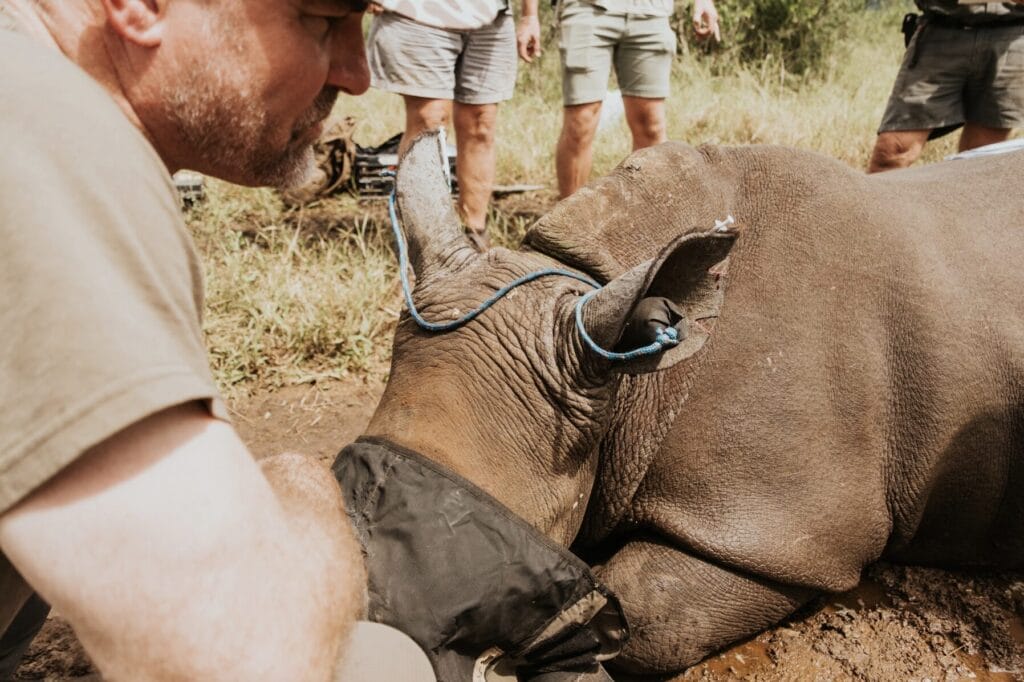
In the arid expanse of South Africa’s Northern Cape, a quiet revolution in rhino conservation is unfolding. At the heart of it is Wicus Diedericks, owner of Rockwood Conservation, a 33,000-acre private reserve that now shelters over 430 white rhinos. What began as a marginal cattle farm has transformed into one of the most ambitious and controversial conservation efforts in the country.
“I never set out to have hundreds of rhinos,” Diedericks admits. “I just wanted to rewild the land, create a game reserve for my family and friends, and enjoy the outdoors.” But after acquiring his first rhinos in 2013—45 of them from Kruger National Park—his vision began to shift. Today, those 45 have multiplied to over 150, a stark contrast to Kruger’s devastating 80% rhino loss due to poaching.
The difference, Diedericks argues, lies in the model. “Private reserves are now home to more than 70% of South Africa’s rhinos,” he explains. “But unlike state parks, we receive no subsidies, no donor funding, no tourism income. We have to make conservation work in a capitalist system.”
That reality has forced Rockwood to innovate. Diedericks implemented intensive protection zones—secure areas where rhinos are corralled at night and monitored by armed rangers on horseback during the day. “It’s like herding sheep with wool sprayed on them,” he says. “You bring them in at night, let them out with a shepherd during the day. It’s the only way to keep them safe.”
The security measures are extensive: thermal cameras, license plate recognition systems, access-controlled fencing, and a full-time intelligence team tracking organized crime networks. “Poaching isn’t just about rhinos,” Diedericks warns. “It’s the same people smuggling drugs and guns. It’s organized crime with a different commodity.”
Despite these efforts, the economics of rhino conservation remain brutal. The cost to raise a rhino to five years old is around 450,000 to 500,000 Rand, yet the market value has plummeted to a fraction of that due to poaching risks. “People just got rid of their rhinos,” he says. “The number of private rhino owners dropped from nearly 500 to under 200.”
Faced with unsustainable losses, Diedericks turned to a controversial solution: legalizing the international trade of rhino horn. “The horn is dead tissue, like hair or nails,” he explains. “We trim it regularly to prevent poaching and reduce fatal fights between rhinos. We’re sitting on stockpiles of horn that were humanely harvested.”
But international trade is governed by CITES—the Convention on International Trade in Endangered Species—which lists rhino horn under Appendix I, the strictest category. Diedericks knew that downlisting the horn would require a two-thirds vote from member countries, many of which are influenced by anti-use lobbying groups and have no stake in rhino conservation.
Instead, he pursued a lesser-known legal pathway: the Article 7 exemption for conservation breeding facilities. “It’s part of the convention,” he says. “Millions of specimens are traded under this exemption every year—parrots, tigers, crocodiles. South Africa has used it over 26 million times. But for some reason, rhinos were treated differently.”
When South Africa’s Department of Forestry, Fisheries and the Environment (DFFE) refused his permit application, Diedericks took the matter to court. After years of litigation, the court ruled in his favor in late 2025, affirming that the Article 7 exemption applies to rhino horn and that the government must reconsider its decision.
“This opens the door for legal trade from conservation breeding facilities,” Diedericks says. “It means we don’t need an import permit or a non-detrimental finding (NDF), which is usually required for wild specimens. It’s a game-changer.”
The implications are profound. Under CITES, live rhinos are listed under Appendix II, allowing for regulated hunting and export. But once dead, their horns are considered Appendix I, making them harder to trade than the animals themselves. “It’s almost designed to not give rhinos a chance,” Diedericks says.
With the court’s decision, countries like China—previously reluctant to issue import permits—can now engage in trade more easily. “Once we have the export permit, it’s easier for them to join the dance,” he says.
Critics may worry that this opens the floodgates to exploitation, but Diedericks insists the goal is sustainability. “We’re not planning to kill half our rhinos,” he says. “We’re trying to make conservation viable. If we can fund protection through horn sales, we can safeguard the species.”
As the dust settles on the landmark ruling, Rockwood stands as a beacon of what’s possible when pragmatism meets passion. “Desperate times call for desperate measures,” Diedericks says. “Kruger is proof that the old model isn’t working. It’s time to try something new.”
To listen to the full podcast:
Spotify: https://open.spotify.com/episode/5AED2m2cvnUwa5tW0RWJNx?si=43ece0e3de384c46
Apple: https://podcasts.apple.com/us/podcast/the-origins-foundation-podcast/id1543788045?i=1000735357252
Watch on youtube: https://youtu.be/ld51dCFJPY4
